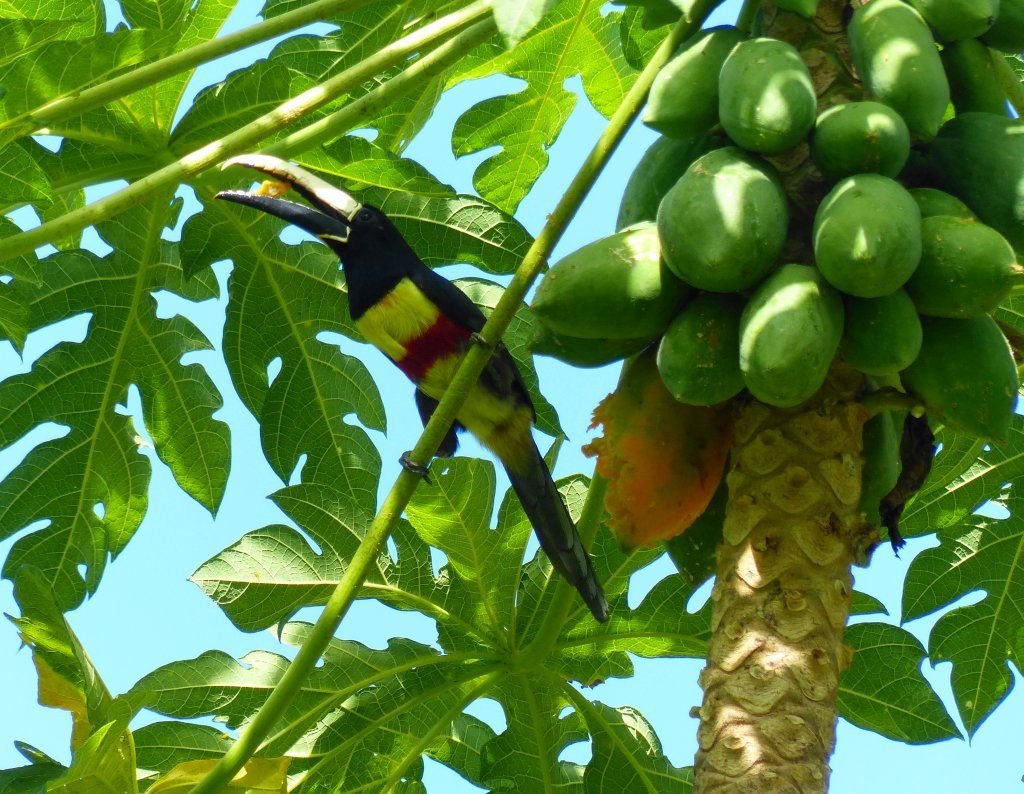
Welcome to another episode of Birding in Suriname. The bird in the thumbnail is the Striated Heron. This fairly small heron can been found hunting for little fish alongside the canals here in Suriname. Suriname is one of the former Guyanas north of Brazil.
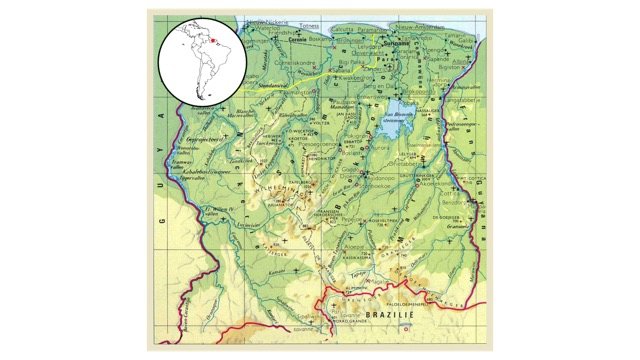
There any many birds that live in and around the canals and rivers. Like the Ringed Kingfisher. I spotted this bird last week for the first time.

Perching on a branch this medium sized kingfisher is always on the look out for fish. Once spotted it dives, sometimes from great heights, into the water to catch them. It swallows them head down. This noisy bird is rather shy. Therefore it's difficult to shoot a decent picture. This bird in the picture is a female. You can tell by the white stripe on its breast.

I spotted two more birds last week. That brings my total of spotted birds on 56. The other one I spotted was a toucan.

I had no idea what I photographed when I took this picture. If I would have known I would have tried to get closer. I never saw a toucan in the wild before. They are not rare but as a typical forest bird difficult to spot. Its big and long bill helps it to reach for berries and fruits. It's not my style but here's a picture from the internet to show you this beautiful bird.
The toucan is a typical forest dweller. Once you enter the forest than you know you're in the tropics.
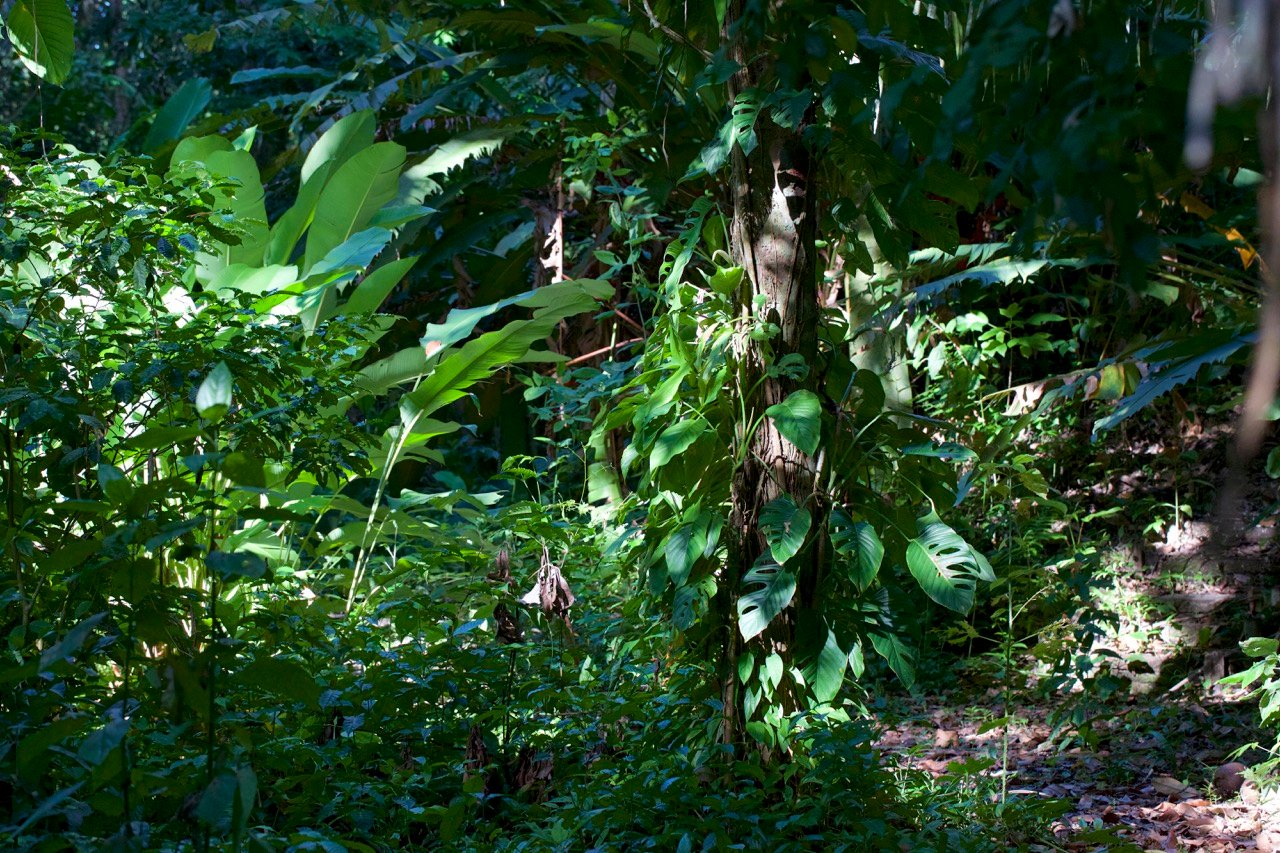
You find strange plant life like this tree with these coconut sized seeds. You don't want to have one of those landing on your head. They are massive.
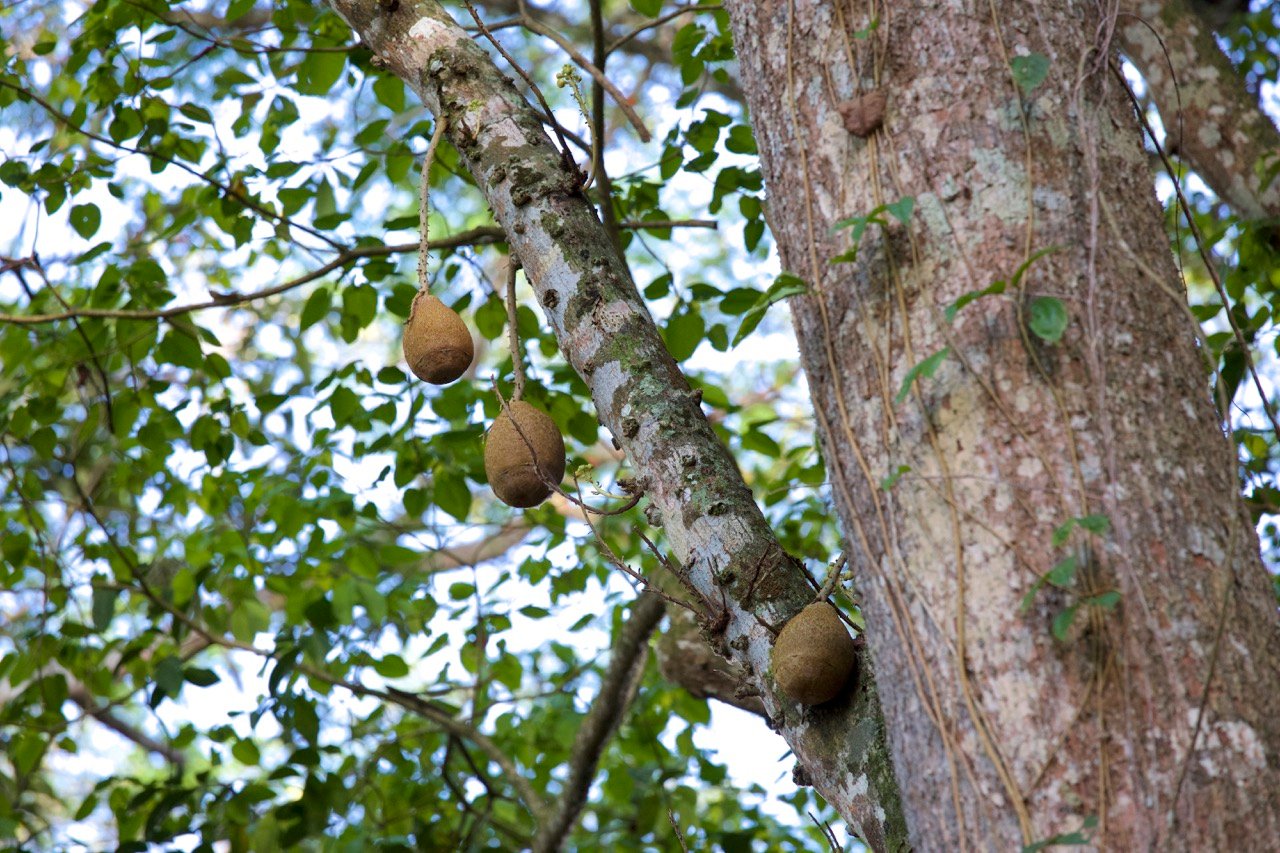
The wasps in the next picture are also found in the forest. I've seen several nests against the trees. They can be dangerous when disturbed or threatened. I think they build a very beautiful and ingenious nest for themselves.
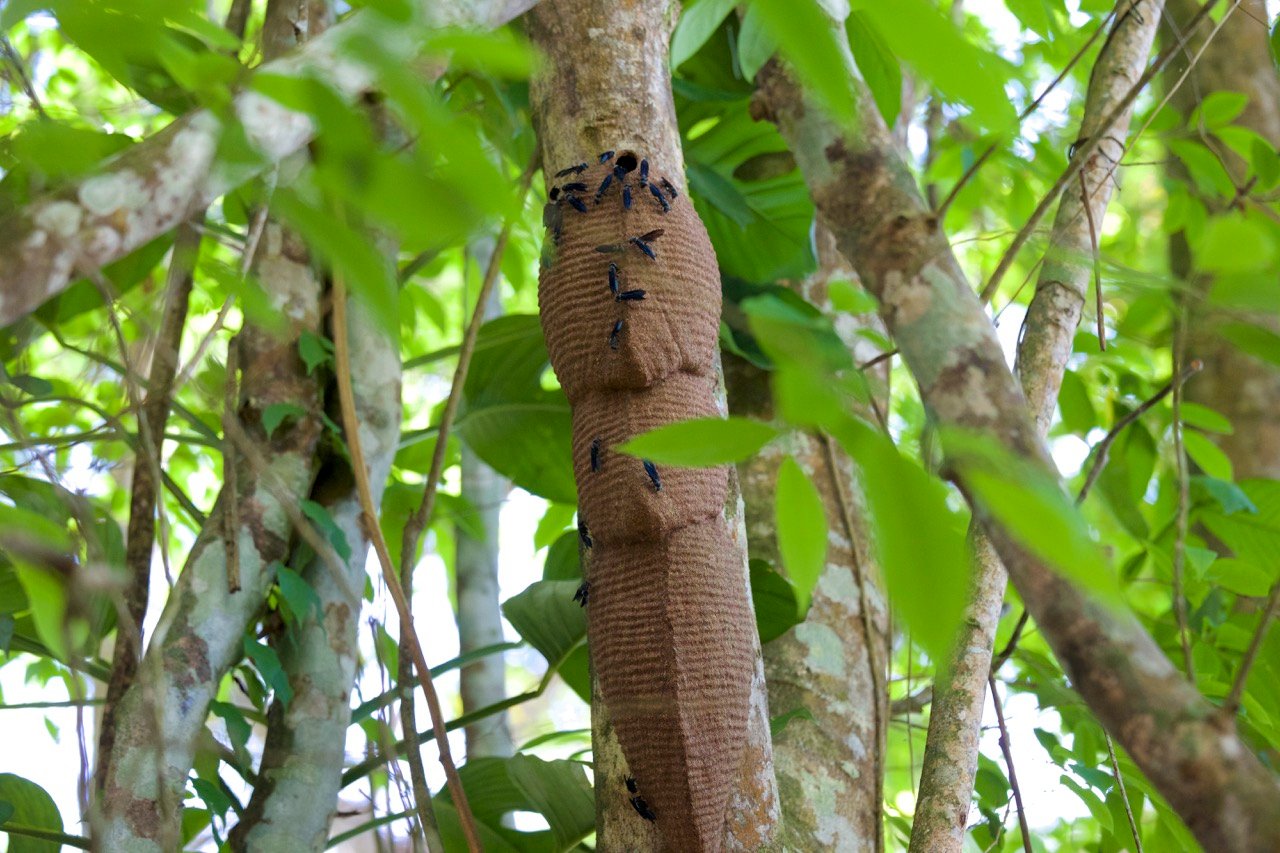
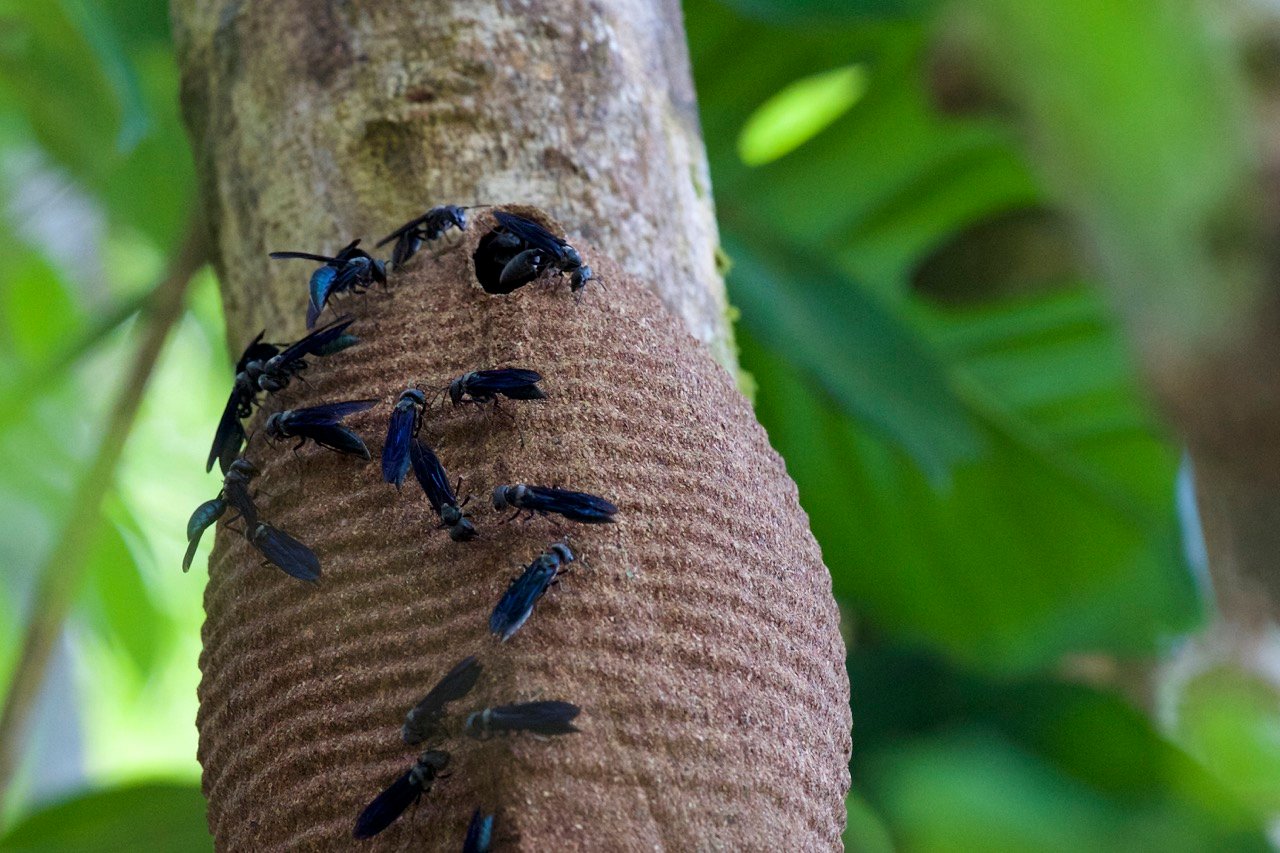
This butterfly is a Blue Morpho with its wings closed. The upper side of the wings are a beautiful metallic blue. This colour is not caused by pigmentation but by light refraction caused by the microscopic scales on its wings. This butterfly lives on the forest floor where it's difficult to spot with its wings closed.

This next bird, that I spotted a couple of weeks ago, is a Black Throated Mango. It's a young male. The female has some white on her breast. They nest high in the trees. It also prefers to feed from flowers higher in the trees. Like the papaya.

It's very closely related to the Green throated Mango. This species is more common although I haven't seen it that much lately. The female looks almost identical to the black throated mango. It feeds mainly on flowers but also on insects. It can be seen hovering around tree tops and palms looking for them. Humming birds are known for their abilities to fly. It's the only bird that can fly backwards. They use up so much energy while flying that , during the day, they eat as much as three times their own body weight. During the night they are capable of slowing down their own metabolism and heartbeat to preserve energy.


In the next picture you see three different birds. The great kiskadee, the slender-billed kite and the Crested Oropendola.
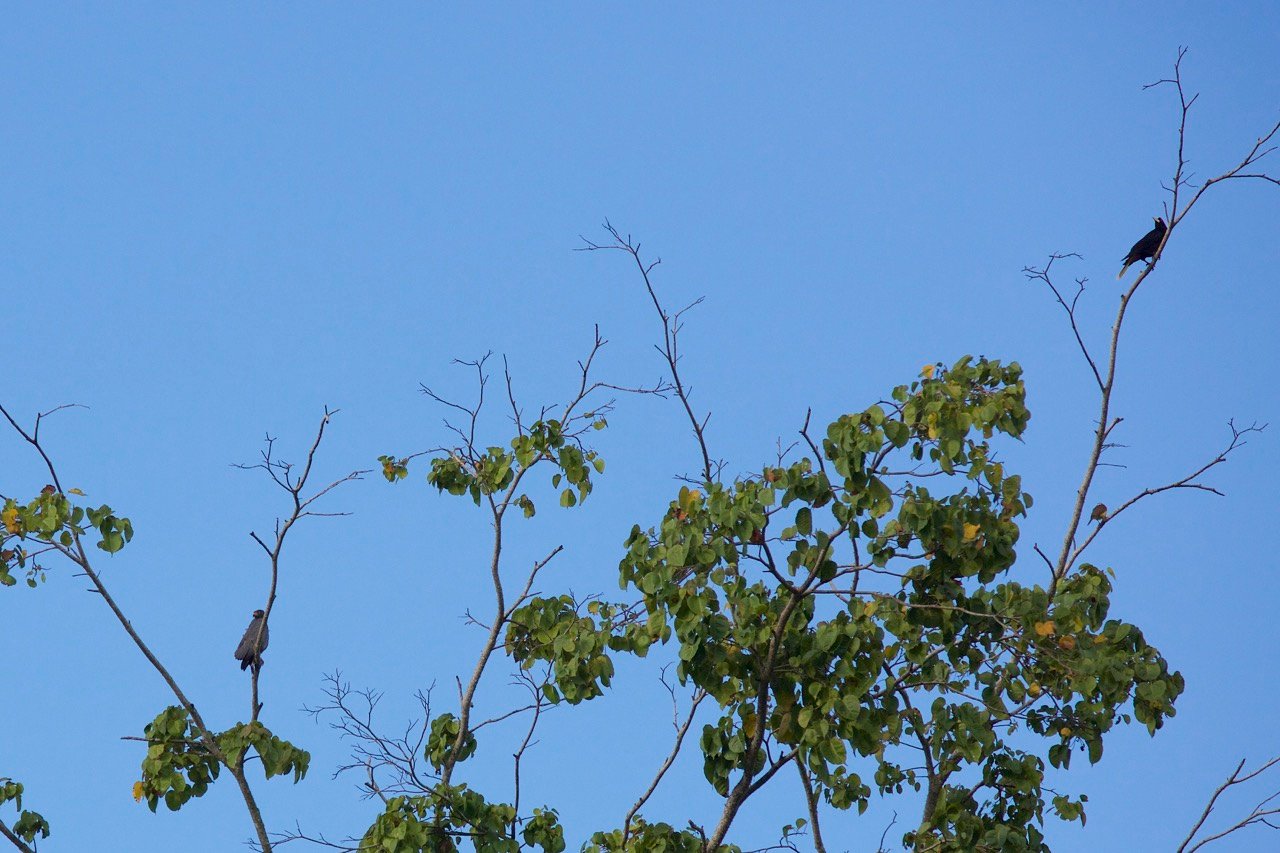
The crested oropendola is a black bird in the genus Icteridae. Here we can see the male trying to attract a female. They breed around this time of the year.

It's a fairly big bird that weaves beautiful nest hanging from branches high in the trees. It has a yellow bill and the tail wings underneath are also yellow. This very intelligent bird has a big variety in songs and calls. Some of these calls are very complicated.
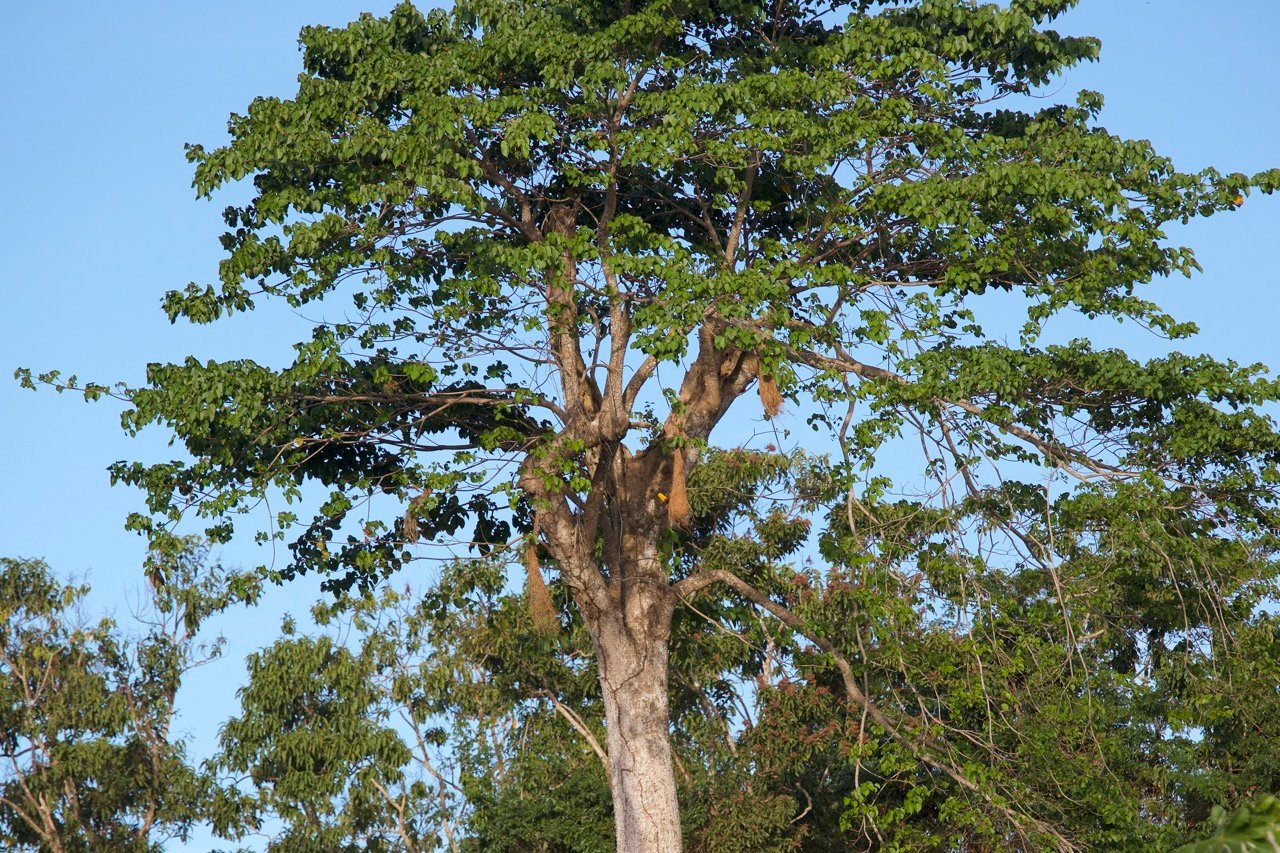
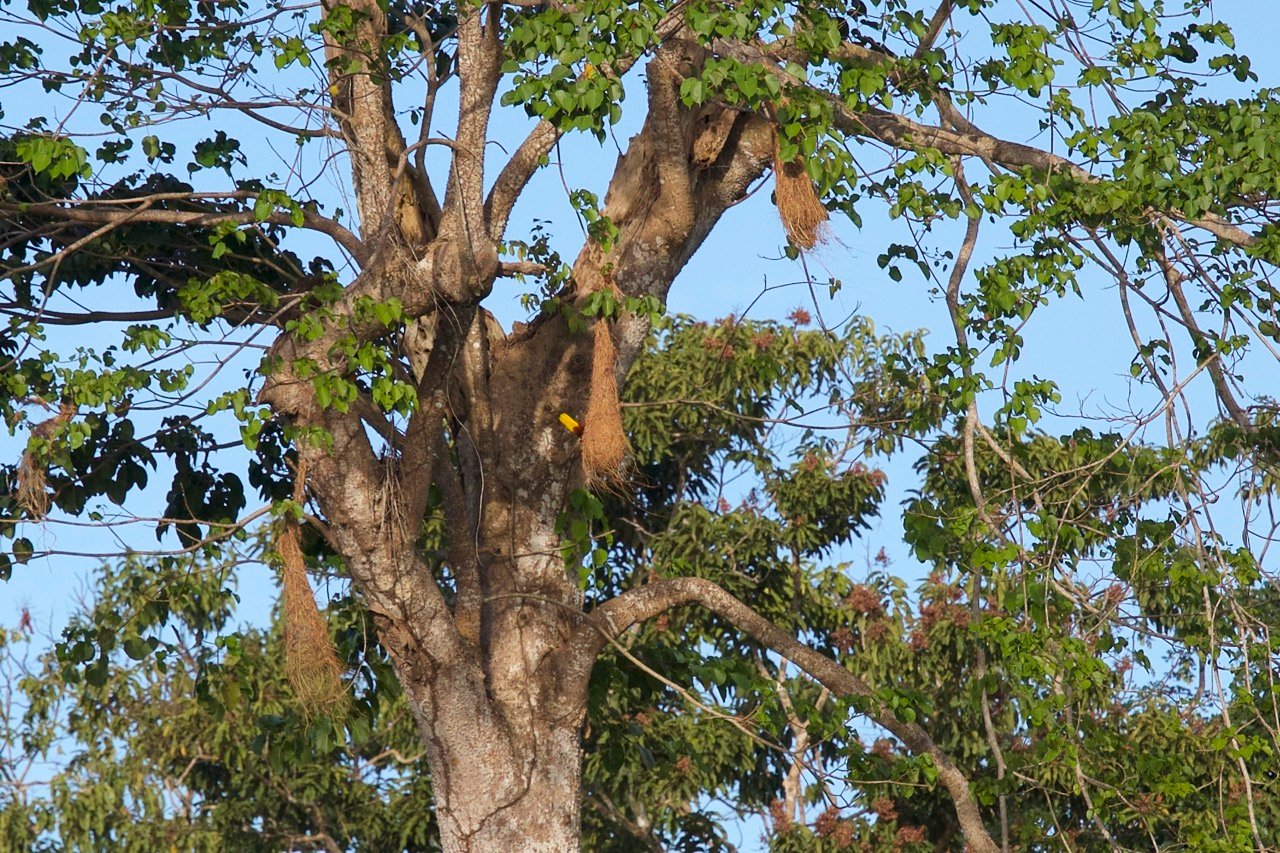
The last two pictures are from a female Cinerous Becard. They feed on anthropods including caterpillars but they also eat small fruit and berries. The male is more black / grey-white. It's the second time that I spotted this bird. They are not threatened but not very common either.


Thank you for reading my post. I hope you enjoyed the birds and that you will join me next week for another episode of Birding in Suriname.
Much love,
Gardenbsquared
PS
Here is a list with the birds that I've spotted in Suriname.
- Red-breasted Meadowlark (Sturnella militaris)
- Great Kiskadee (Pitangus sulphuratus)
- Ruddy ground dove (Columbina talpacoti)
- Snail kite (Rostrhamus sociabilis)
- House wren (Troglodytes aedon)
- lesser yellow-headed vulture (Cathartes burrovianus)
- Striated Heron (Butorides striata striata)
- Snowy egret (Egretta thula)
- Tricolored Heron (Egretta tricolor ruficollis)
- Cattle egret (Bubulcus ibis)
- Scarlet ibis (Eudocimus ruber)
- Blue-black grassquit (Volatinia jacarina)
- White winged Swallow (Tachycineta albiventer)
- White-headed marsh tyrant (Arundinicola leucocephala)
- Orange-winged Parrot (Amazona amazonica)
- Yellow Oriole (Icterus nigrogularis)
- Tropical Mockingbird (Mimus gilvus)
- Blue-grey Tanager (Tangara episcopus)
- Glittering-throated emerald (Amazilia fimbriata)
- The Wattled Jacana (Jacana jacana)
- Tropical Kingbird (Tyrannus Melancholicus)
- Wing-barred Seedeater (Sporophila Americana)
- Pied Water-tyrant (Fluvicola pica)
- Piratic Flycatcher (Legatus leucophaius)
- Green-throated Mango (Anthracothorax viridigula)
- Green Kingfisher (Chloroceryle americana)
- Palm Tanager (Thraupis palmarum)
- Green-rumped Parrotlet (Forpus passerinus)
- Common ground dove (Columbina passerina)
- Yellow Warbler (Setophaga petechia)
- Crimson-crested Woodpecker (Campephilus melanoleucos)
- Crested Oropendola (Psarocolius decumanus) Blackbird
- Yellow-rumped Cacique (Cacicus cela)
- Spotted Sandpiper (Actitis macularius)
- Purple Martin (Progne subis)
- Cinereous Becard (Pachyramphus rufus)
- Smooth-billed Ani (Crotophaga ani)
- Pale-breasted Thrush (Turdus leucomelas)
- Black-capped Donacobius (Donacobius atricapilla)
- Silver-beaked Tanager (Ramphocelus carbo)
- Black-collared Hawk (Busarellus nigricollis)
- Black-throated Mango (Anthracothorax nigricollis)
- Rufous Crab-Hawk (Buteogallus aequinoctialis)
- Laughing Falcon (Herpetotheres cachinnans)
- Rusty-margined Flycatcher (Myiozetetes cayanensis)
- Yellow-chinned Spinetail (Certhiaxis cinnamomea)
- Greyish Saltator (Saltator coerulescens)
- Blue-tailed Emerald (Chlorostilbon mellisugus)
- Spotted Tody-Flycatcher (Todirostrum maculatum)
- Semipalmated Sandpiper (Calidris pusilla)
- Solitary Sandpiper (Tringa solitaria)
- Little Blue Heron (Egretta caerulea)
- Slender-billed Kite (Helicolestes hamatus)
- Black-crested Antshrike (Sakesphorus canadensis)
- Ringed Kingfisher (Megaceryle torquata)
- Black-necked Aracari (Pteroglossus aracari)

